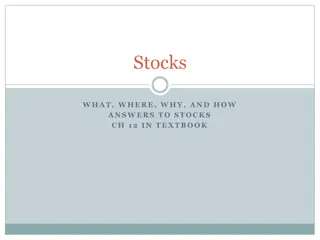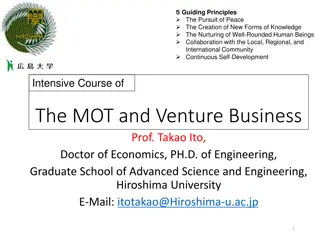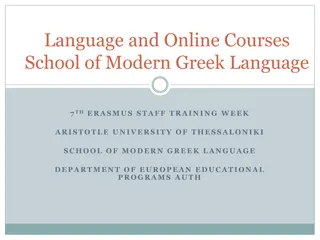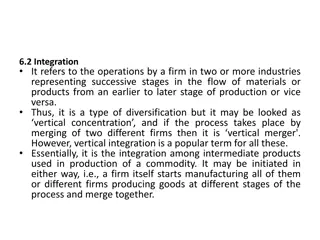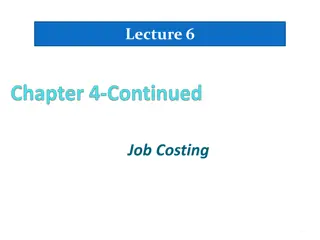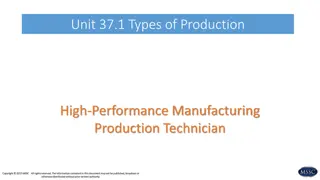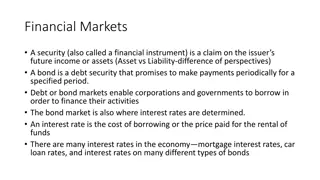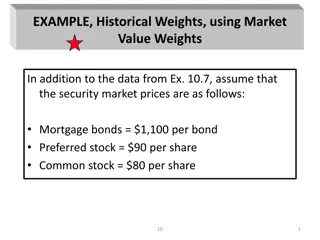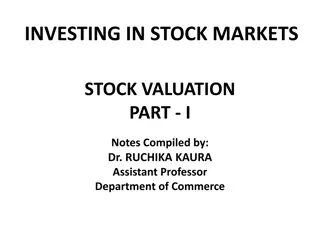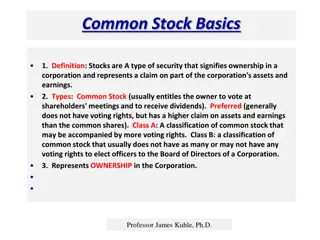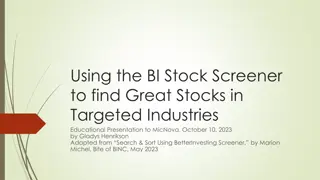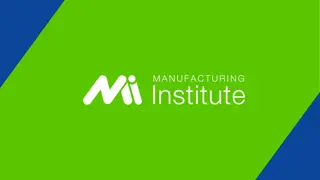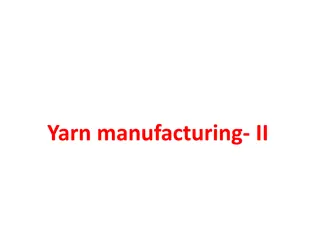Knowledge Stock of Greek R&D Active Manufacturing Firms
Research conducted by Gkypalia, Rafailidis, and Tsekouras from the University of Patras and Technological Educational Institute of Western Greece focuses on the knowledge stock of Greek R&D active manufacturing firms using financial accounts from 2001-2010. The study emphasizes the importance of firms' strategic assets accumulated over time and the measurement of investments in knowledge creation and acquisition based on International Accounting Standards.
Download Presentation

Please find below an Image/Link to download the presentation.
The content on the website is provided AS IS for your information and personal use only. It may not be sold, licensed, or shared on other websites without obtaining consent from the author. Download presentation by click this link. If you encounter any issues during the download, it is possible that the publisher has removed the file from their server.
E N D
Presentation Transcript
The Knowledge stock of Greek R&D active manufacturing firms: Based on published financial accounts for the period 2001-2010 A. Gkypalia, A. Rafailidisb, and K. Tsekourasa, aDepartment of Economics, University of Patras, University Campus, Rio, 26504, Patras Greece bDepartment of Business Administration, Technological Educational Institute of Western Greece, 1st, M. Alexandrou, Koukouli, 26334, Patras, Greece
Outline Motivation Sample and Context specificities Inventory Perpetual Method Management of the available information Mapping Greek R&D firms knowledge intensity Some basic descriptive statistics
Motivation: Why construct firms R&D stock? Dierickx and Cool (1989): Firms internally build their strategic assets. These type of assets is the cumulative result of adhering to a set of consistent policies and practices over a period of time. In other words, strategic asset stocks are accumulated by choosing appropriate time paths of flows over a period of time. Hence, in order to study the role of firms knowledge base on aspects of their economic performance, availability of a stock variable would capture a more holistic aspect of the firms knowledge base. the
The sample 300 engaged in R&D activities during the period 2001-2010 Greek Manufacturing firms Information drawn from their financial accounts has been employed for the construction of their knowledge stock
Knowledge assets We follow the definition of R&D investments given by International Accounting Standards (IAS 38), where particular emphasis is given to the term intangible assets . Therefore, we are interested in measuring the investments in knowledge creation and/or acquisition, as they are perceived and reported by Greek firms in their annual financial statements.
R&D stock: Inventory Perpetual Method (1) Following, Hall et al. (2010) and Kumbhakar et al. (2012) knowledge stock is approximated as follows: ( 1 it K ) = + K R , 1 i t it where K is the knowledge stock of firm i at time t, R denotes annual investments in the creation and/or acquisition of knowledge assets at time t and is a suitably chosen (private) depreciation rate.
R&D stock: Inventory Perpetual Method (2) Assumption: some (or all) of these firms were engaged in R&D activities before 2001 How to approximate such preexisting knowledge base? R it 0= K 0 it + g is ij where is the depreciation rate of the ith firm which depends on the four sectors, namely high-tech, medium-high tech, medium low tech and low tecg established by OECD and is the knowledge investments growth rate at the industry level j as it is approximated by OECD ANBERD database. is ij g
Management of information 2004: Transition year from National Accounting Standards (NAS) to International Accounting Standards (IAS). Obligatory for publicly traded firms. Main differences: (i) IAS dictate that Research should be separated from Development which in NAS this is not necessarily the case (ii) The method for the valuation of (intangible) assets differs between the two standards in that the IAS dictate that the valuation of assets is done at their current price taken the last day of the financial year, whereas the NAS dictate that the valuation of assets is done by selecting the lowest value between their current and purchase price. IAS tend to be less strict than NAS and that impacted our R&D expenditures measurement. (iii) IAS from their philosophy are less detailed than NAS and therefore, crucial information needed in order to calculate annual R&D investments and thus, Greek firms knowledge stock had to be approximated
Constructing Knowledge stock: how to approximate annual expenditures Two sources of information: (i) expenditures to acquire/form assets and (ii) annual expenditures from profit and loss account (ARD) Annual flow of R&D investments following NAS Book values of Cumulative expenditures on R&D following NAS at year t Annual flow of Industrial Property Right investments following NAS Book values of Cumulative expenditures on Industrial Property Rights following NAS at year t RD t = RD CR CR 1 t t t CR t = IPR CIPR CIPR IPR 1 t t t t CIPR t In sum the annual expenditures on R&D are calculated as: it it it R RD IPR = + + , 0 ARD R it it
Greek R&D (GRD) manufacturing firms knowledge intensity The mapping of the knowledge intensity is attempted, is defined as the degree of involvement of knowledge in business activities either through its integration directly into GRD firms outputs or indirectly through their inputs. Two indices are constructed for the approximation of GRD firms knowledge intensity: the ratio of knowledge capital per employee Knowledge Capital Total Number of Employees KNEMPL = the ratio of knowledge capital to GRD firms total assets . Knowledge Capital Total Assets KNASS =
Some basic descriptive statistics (1) KNEMPL and Technological Opportunities KNASS and Technological Opportunities 1,200,000 80% 60% 800,000 KNCAP/TOTASS KNCAP/EMPL 40% 400,000 20% 0% 0 Average 14.11% 5.83% 7.55% 19.33% Min 0.01% 0.01% 0.02% 0.11% Max 77.50% 68.06% 77.50% 76.98% All LT MT HT All LT MT HT Max Min Average 986,105 15 26,320 134,396 15 10,869 480,964 78 27,816 986,105 392 79,399
Some basic descriptive statistics (2) Kernel Density estimate of KNEMPL index Kernel density estimates of KNASS index .00004 Small Medium Large Small Medium 10 .00003 Large .00002 Density De nsi 5 ty .00001 0 0 .2 .4 .6 .8 0 0 200000 400000 600000 800000 1000000 KNASS KNEMPL
Conclusions In order to investigate the role of firms knowledge base the construction of their knowledge stock is a precondition The perpetual method is the most common and acknowledged approach for such an endeavor. In the case of the Greek Manufacturing firms their knowledge stock for the period 2001-2010 has been constructed. In this context a structural change has been handled. Preliminary descriptive statistics indicate that high-tech sectors indeed both with respect to their inputs and outputs have accumulated knowledge bases at a greater extent compared to low tech sectors. With respect to knowledge intensity small firms seem to be more intensive (but not in absolute R&D investments) than large firms. In other words they face more severe knowledge indivisibilities and less fixed costs dispersion.
THANK YOU FOR YOUR ATTENTION!!!






